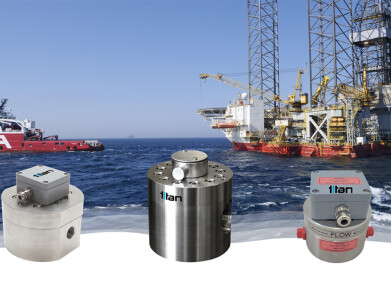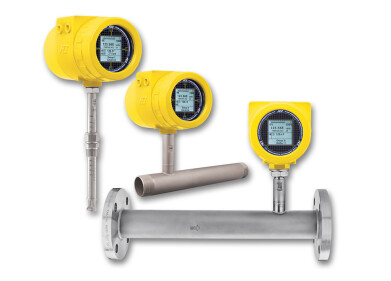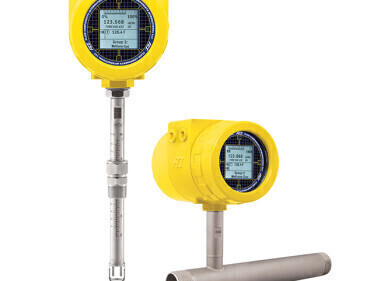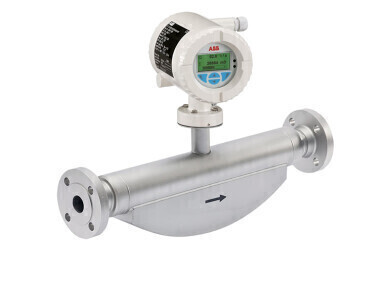Flow meter
Thermatel® TA2, Thermal Mass Flow Meter
Jul 19 2017
Today’s THERMATEL Model TA2 Thermal Mass Flow Transmitter provides reliable mass measurement for air and gas flow applications. The powerful, yet easy to use electronics are contained in a compact explosion proof enclosure. The TA2 is available with both insertion probes as well as flow body design for smaller pipe sizes. The TA2 offers excellent performance at an exceptional value:
- Direct mass flow measurement of air and gas
- Strong signal at low flow rates with high turndown
- Process temperatures to + 200°C
- Rotatable housing & display for viewing from all angles
- Built-in totalizers & optional second mA & pulse outputs
- Field calibration verification
Please click here for more information about Thermatel® TA2.
Answers to Key Measurement Questions About Thermal Mass Flow Meters
The Magnetrol® flow portal, flow.magnetrol.com, provides information about thermal mass flow meters and how they can improve the efficiency and safety of many processes. Periodically, MAGNETROL product manager Tom Kemme answers questions about flow meters in the portal’s Ask the Expert column. Below some recent Q&As.
Question: What is the difference between the flow units Nm3/h, Sm3/h, and actual m3/h?
Answer: Actual m3/h is a flow rate at operating temperature and pressure. Normal or standard m3/h (Nm3/h = Sm3/h) is a flow rate at standard temperature and pressure (STP). I tend to reference the natural gas industry, where it is not possible to compare flow rates at every operating condition, so it is preferable to reference all flow rates back to a set of base conditions, such as 15 °C (60°F) and 1.01325 bar (1 atm). STP is not universal so it may be unique based on the region or industry.
Most flow meters output a flow rate at operating conditions and need to correct this measurement. This may be accomplished with a multivariable transmitter or external to the device. A few examples that do not need to correct the measurement are thermal mass flow meters, such as the ones produced by MAGNETROL, and Coriolis flow meters.
Question: Do you have any certified failure rate data on your units to perform an SIL verification?
Answer: A Failure Modes, Effects, and Diagnostics Analysis (FMEDA) is completed during development to determine failure rates and Safe Failure Fraction (SFF). The SFF is utilized to determine Safety Integrity Level (SIL), which is often the published value.
Question: What should my meter be reading with no air flow in the pipe?
Answer: At zero flow and a dry pipe, a thermal mass flow meter should measure zero. Different thermal meters may have varying stability at no flow due to differences in operation.
There are two different types of operation: constant temperature (CT) and constant power (CP). CT devices start with a low power and this power increases with the flow rate to maintain the constant temperature difference (ΔT) between the RTDs. CP devices start with a high ΔT between RTDs at low flow and the ΔT decreases as the flow rate increases. CP may lack stability at zero flow due to possible convection currents associated with the high ΔT. CT will hold zero better, particularly devices that add less heat. For example, the maximum surface temperature of a TA2 probe is 4 C above process temperature. This is extremely low heat, eliminating convection currents due to the sensor. Convection currents could also occur through the pipe due to temperature variations.
It is also possible for a thermal meter to measure above zero during a no flow condition when there is pressure buildup in the line (typically a valve closed downstream). There may be low flow cutoff settings that can be changed to ignore nuisance measurements.
More Information
Please click here for more information about thermal mass flow meters, or to ask a question of your own.
Digital Edition
PIN 26.1 Feb/Mar 2025
March 2025
Analytical Instrumentation - Elemental Analysis for Quality and Process Control at Refineries, for Lubricants and Wear Metals in Engine Oils - Synthetic Lubricants: New Developments - Scaling...
View all digital editions
Events
Apr 22 2025 Hammamet, Tunisia
Apr 22 2025 Kintex, South Korea
Solar & Energy Storage Summit 2025
Apr 23 2025 Denver, CO, USA
Apr 27 2025 Portland, OR, USA
Apr 29 2025 Mumbai, India

.jpg)



















